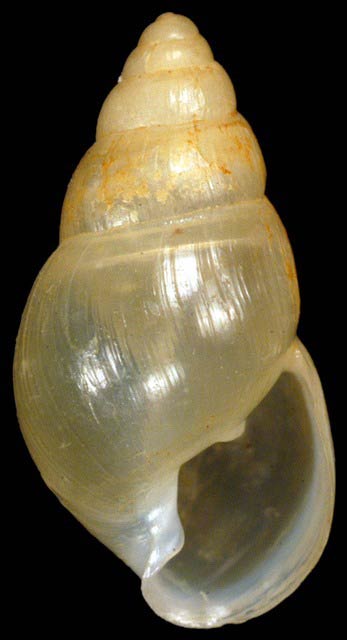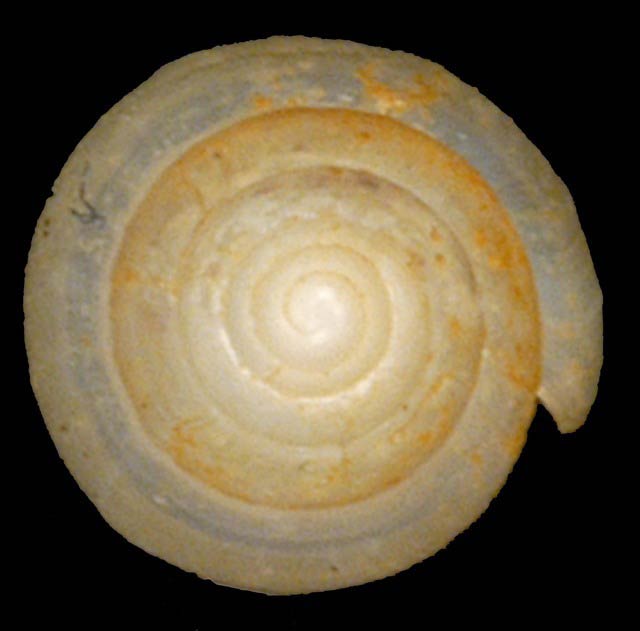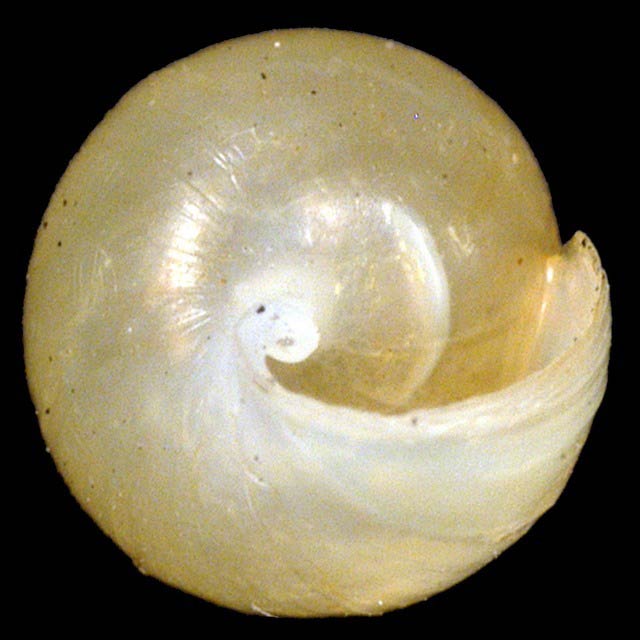Leptinaria unilamellata
|
Leptinaria unilamellata. (Photo: © G. Rosenberg, Academy of Natural Sciences) |
|
Leptinaria unilamellata. (Photo: © G. Rosenberg, Academy of Natural Sciences) |
|
Leptinaria unilamellata. (Photo: © G. Rosenberg, Academy of Natural Sciences) |
|
Leptinaria unilamellata. (Photo: © G. Rosenberg, Academy of Natural Sciences) |
Family
Subulinidae
Species
Leptinaria unilamellata (D'Orbigny, 1835)
Common name
None reported
Description
This species measures a maximum of 20.6 mm in heightHeight:
The height of the shell is a measure of the distance between the apex and the most basal part of the shell OR the measurement taken from the apex of the shell to the base, when measured parallel to the axis of the shell.
, with approximately 6 whorlsWhorls:
Pleural of whorl. A whorl is a complete spiral turn/growth of the shell of a mollusc. The whorls are counted from the apex outwards.
. The shellShell:
A hard, inflexible, calcareous or chitinous structure that vary in size and may either completely encasing the animal, covering some part of it or be internal.
ranges from tan to pale brown in color. The apertureAperture:
The major opening of a shell that the body of the animal may be retracted.
(mouth) has denticles (teeth).
Distribution
Pacific Islands: Hawaii
Central and South America: Mexico
Caribbean
Ecology
Leptinaria unilamellata is capable of self-fertilizationSelf-fertilization:
This is an event where an organism is produced by the fertilization of an egg by sperm from the same organism. (See also hermaphrodite)
and has been documented to occur in large numbers wherever it inhabits (e.g., greenhouses). This species is reported to achieve sexual maturity in approximately 104 days and on average will lay as many as 22 eggs per clutch.
Synonyms
- Achatina lamellata
- Tornatellina (Leptinaria) lamellata Potiez and Michaud
References
Almeida and Bessa 2001Almeida and Bessa 2001:
Almeida, M.N. and E.C. Bessa. 2001. Growth and reproduction of Leptinaria unilamellata (d’Orbigny) (Mollusca: Subulinidae) in laboratory conditions. Rev. Bras. Zool. 18(4): 1107-1113.; Cowie 1997Cowie 1997:
Cowie, R.H. 1997. Catalog and bibliography of the nonindigenous nonmarine snails and slugs of the Hawaiian Islands. Bishop Museum Occasional Papers. 50.; Cowie et al. 2008Cowie et al. 2008:
Cowie, R.H., K.A. Hayes, C.T. Chuong, T.Tran and W.M. Meyer III. 2008. The horticultural industry as a vector of alien snails and slugs: widespread invasions in Hawaii. International Journal of Pest Management 54(4): 267-276.; Juricková 2006Juricková 2006:
Juricková, L. 2006. Subulina octona (Bruguière, 1798) - a new greenhouse species for the Czech Republic (Mollusca: Gastropoda: Subulinidae). Malacologica Bohemoslovaca. 5: 1-2.; Robinson et al. 2009Robinson et al. 2009:
Robinson, D.G., Hovestadt, A., Fields, A. and Breure, A.S.H. 2009. The land Mollusca of Dominica (Lesser Antilles), with notes on some enigmatic or rare species. Zoologische Mededelingen 83: 615-650.; Rosenberg and Muratov 2006Rosenberg and Muratov 2006:
Rosenberg, G. and I.V. Muratov. 2006. Status report on the terrestrial Mollusca of Jamaica. Proceedings of the Academy of Natural Sciences of Philadelphia 155: 117-161.





